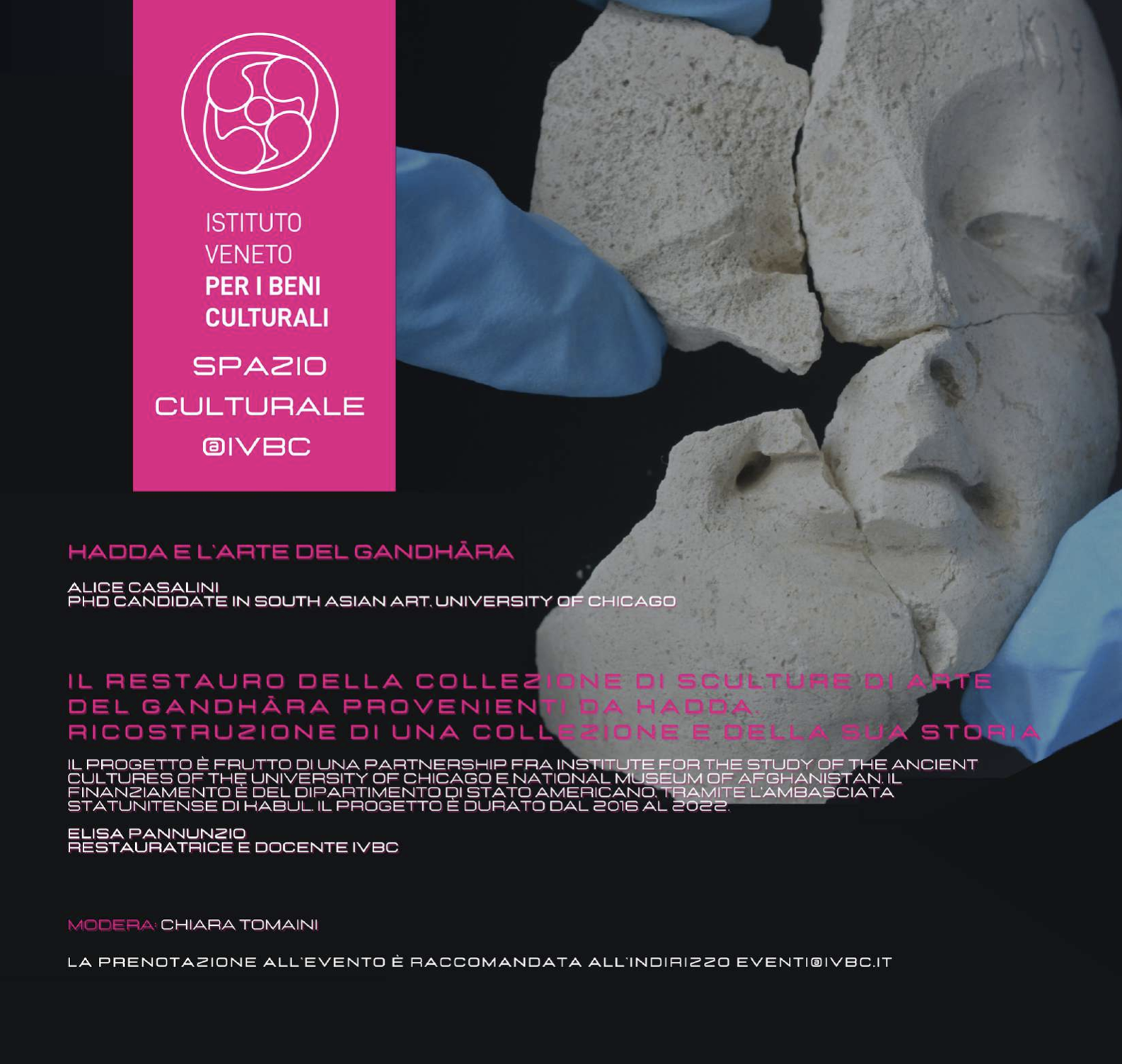2025
-
![]()
Conferenza: Hadda e l'arte del Gandhāra
May 26, 2025 - 5 pm
On Monday 26th I will be at the Istituto Veneto per i Beni Culturali to talk about the Buddhist monasteries of Hadda (Afghanistan). Conservator Elisa Pannunzio will then present and discuss the conservation work carried out on the plaster and clay objects from Hadda at the National Museum of Afghanistan (NMA). The project was co-sponsored by The Institute for the Study of Ancient Cultures at the University of Chicago and the NMA.
-
![]()
Conference: Re-materialising the ephemeral
September 16-17, 2025
In occasion of the international conference “Re-materialising the ephemeral: The clay and stucco artistry of ancient Asia” at the University of Naples “L’Orientale,” I presented a paper titled: “Making the Buddha: Plaster statuary and spiritual technologies at Hadda.” The proceedings of the conference are under preparation.
2024
-
![]()
The Royal Asiatic Society lecture is now on Youtube!
Find it at the link below:
-
![]()
Workshop: Archaeological Photography and Buddhist Heritage of Pakistan
June, 24, 2024
As part of the Digital Curation of Lahore and Taxila Museum, The Citizens Archive of Pakistan (CAP) conducted a training session at the Taxila Museum, increasing digitisation capacity at the museum and in the heritage sector. In collaboration with the Taxila Museum, Directorate General of Archaeology, Government of Punjab under the Punjab Tourism for Economic Growth Project (PTEGP), Tourism, Archaeology and Museums Department, Government of Punjab, CAP organised the session 'Archaeological Photography and Buddhist Heritage of Pakistan' on 24 June 2024. The session was led by Sirat Gohar, Gandhara Archeologist and CAP's Project Manager at Taxila Museum, with experts John Falconer, Dr. Susan Whitfield, and Alice Casalini.
-
![]()
Lecture: Preserving the cultural heritage of Afghanistan. The Haḍḍa Sculptural Project
April 22, 2024 - 2 pm
Visiting Scholar Alice Casalini (University of Chicago) speaks about the ‘Hadda Sculptural Project,’ a project carried out in partnership with the Institute for the Study of Ancient Cultures and the National Museum of Kabul.
-
![]()
Lecture: The art of crossing over. Gandhāran pathways to nirvāṇa
September 26, 2024 - 6:30 pm - 8:30 pm BST
The art of Gandhāra has often been heralded as prime example of proto-globalization: its rich and syncretic visual vocabulary that freely borrows from Hellenistic, Iranian and Indian models easily lends itself to this discourse in the early centuries of the first millennium. Aquatic imagery in Gandhāra is one of the many lemmas in such vocabulary: nereids, tritons, and other sea monsters are commonly discussed as one of the figurative vehicles through which Hellenism reached Central and South Asia and took hold there. This talk takes a different approach and explicitly asks what the role and function of aquatic imagery was within a Buddhist context and demonstrates that the answer can be found in the Buddhist visual rhetoric of salvation. Through the careful analysis of several panels from the site of Andan Dheri (Swat Valley), the talk shows that aquatic imagery was a fundamental part of a specific iconographic program centered around metaphors of water-crossing—one of the most enduring and popular metaphors of spiritual refinement meant to lead the devotee towards nirvāṇa.






